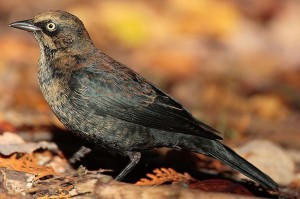Don’t know why but the last two birding trips to Tessentee Bottomland Preserve in Macon County (last Nov. and last Sunday (Nov. 25) have been rushed affairs – allowing about two-and-a-half hours of birding from 9:30 a.m. to 12 noon. Now, of course, two-and-a-half hours of birding at Tessentee is much better than no birding at Tessentee but I would love to have more time to chase more LBJs (little brown jobs) from thicket to thicket and more time to hit more of the trails.
Two-and-a-half hours of birding last year produced 32 species and this year’s effort produced 33 species. I wonder if five hours would mean 66 species? Probably not but I bet it could add another 10 or so.
The thing about these short exposures of time is (as any birder can tell you) that they can produce total different snap shots. A quick glance at a column I wrote about last year’s trip shows six species – American woodcock, red-shouldered hawk, white-crowned sparrow, dark-eyed junco, killdeer and common grackle – that were absent from last Sunday’s list. So, I guess that means we must’ve had seven species this year we didn’t have last year but I can only think of three offhand – eastern meadowlark, fox sparrow and rusty blackbird.
There are at least four subspecies and about 19 races (depending on who’s lumping and/or splitting) of fox sparrows. The eastern or red fox sparrow is by far the most colorful of the group and the one specimen we saw last Sunday was a poster child. The first time we flushed it, it looked like one of those fluorescent orange tennis balls flying across the path. And it fairly blazed orange from the tangles where it perched. The eastern, or red fox sparrow is a large handsome sparrow with a gray crown and nape, rufous cheek patch, rufous rump and tail, and large rufous spots on its breast and flanks.
But birding buddy, Bob Olthoff, and I both agreed that the most memorable aspect of last Sunday’s trip to Tessentee was the large number of rusty blackbirds. After our first encounter with blackbirds Sunday morning, we weren’t 100 percent sure they were rusties. We were on the road at the entrance to Tessentee, which has trees on both sides and is adjacent to a large cornfield. We heard blackbirds coming from the cornfield and looking up, through the tree limbs, we watched as two large, loose flocks passed overhead.
Now, it’s hard to get many birds in focus in those conditions but I was struck by the fact that we didn’t see any red or orange (that would have noted the colorful epaulet of the red-winged) on any of the birds and the flight call or chip didn’t quite seem to fit for red-winged. But it still wasn’t a positive ID for rusty blackbird.
We spent a large part of the rest of the morning looking for birds and lamenting that we didn’t get more definitive looks at the blackbirds.
As the morning was winding up we entered a small wetlands to try and roust some swamp sparrows, which had eluded us so far. The wetlands were bordered on one side by woods. When we entered the wetlands, once again we were treated to the garrulous chips of blackbirds as the trees and sky became alive with birds leaving their roost. Still no great looks, but once again no sign of red that should be evident if they were, indeed red-winged blackbirds. We did roust swamp sparrows.
We continued around the wetlands on a trail through the woods behind them. We found a couple of hermit thrushes and stopped to get good looks. We were also trying to get a handle on the blackbirds when, suddenly, it started raining blackbirds. They were returning to the roost and falling in all around us. This time we got dozens of clear looks and every bird we glassed was a rusty – in that exquisite rusty-tinged winter plumage they are named for. No way to tell if these flocks were different or the same as the earlier flyover but 100 rusties for the morning is a conservative estimate. Rusty blackbird numbers have dropped precipitously since the 1960s and biologists are trying to discover the causes. This was, without a doubt, the largest concentration of rusty blackbirds that Bob and/or I had ever seen in North Carolina.
Tessentee is site number 53 in the North Carolina Birding Trail’s Mountain Guide. It is located off U.S. 23/441. Go 5.2 miles south of Franklin and turn left onto Riverside Road and follow it 0.5 miles to its end. Turn right on Hickory Knoll Road and follow it for 1.8 miles. Turn right at 2249 Hickory Knoll Road. There is a sign on Hickory Knoll Road indicating Tessentee Bottomland Preserve on your right; the red farm gate to the left, as you enter, is the entrance to the property.

